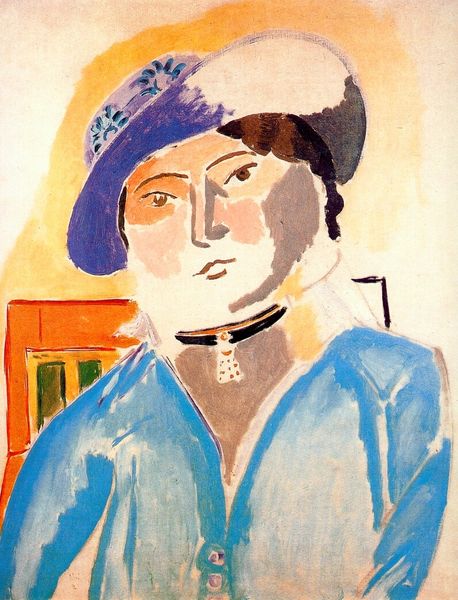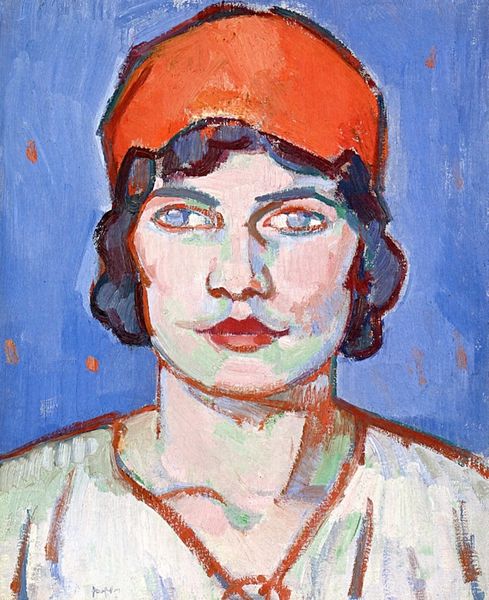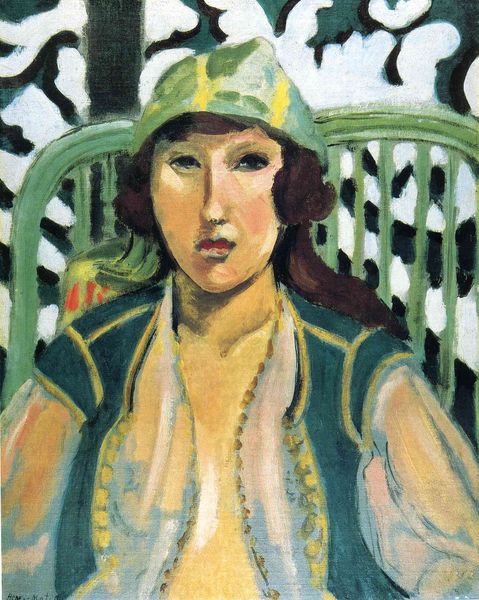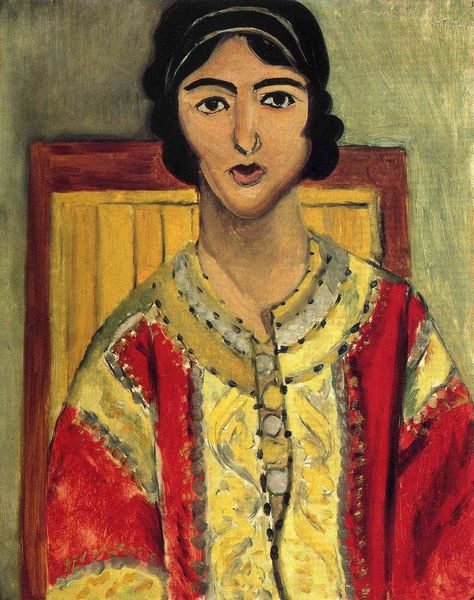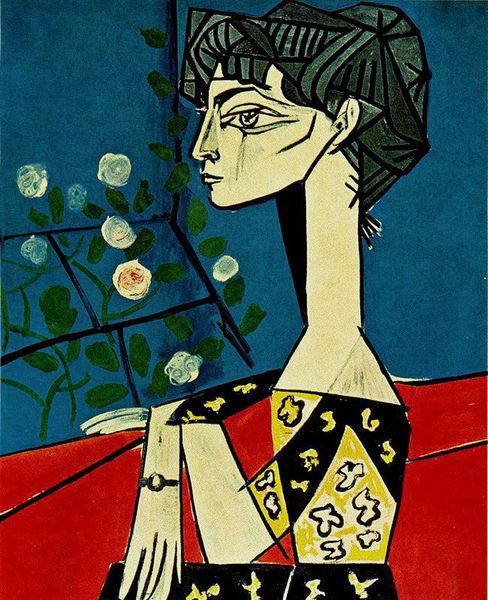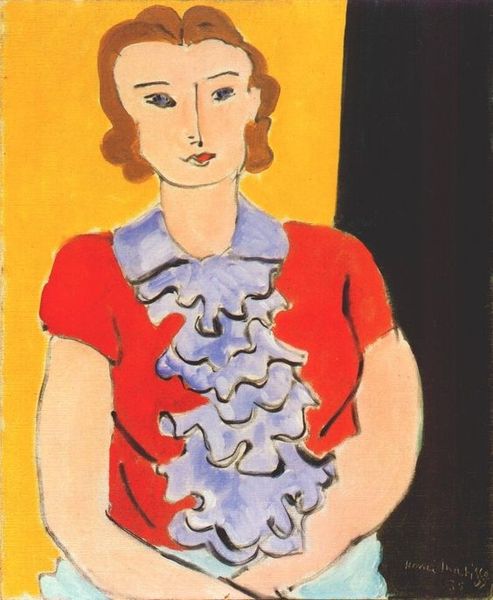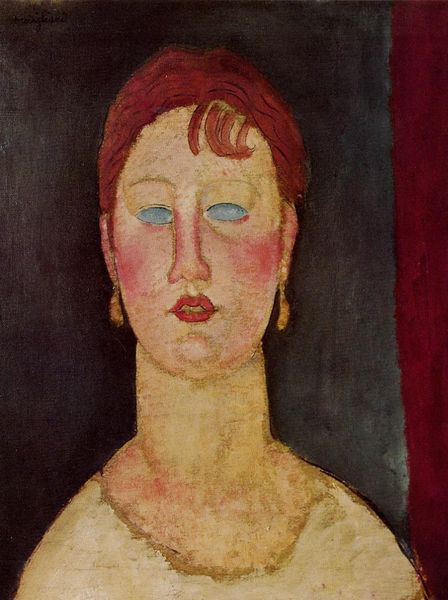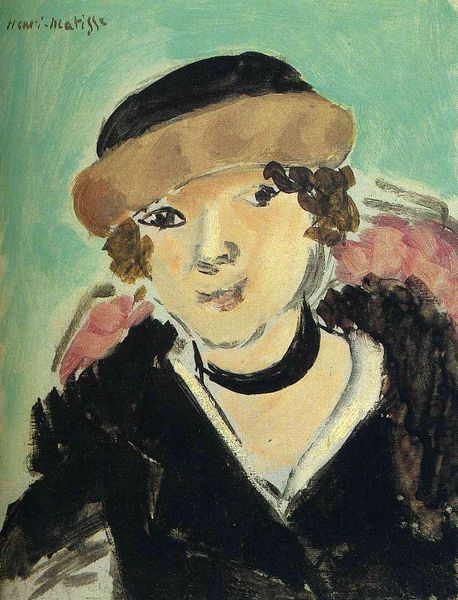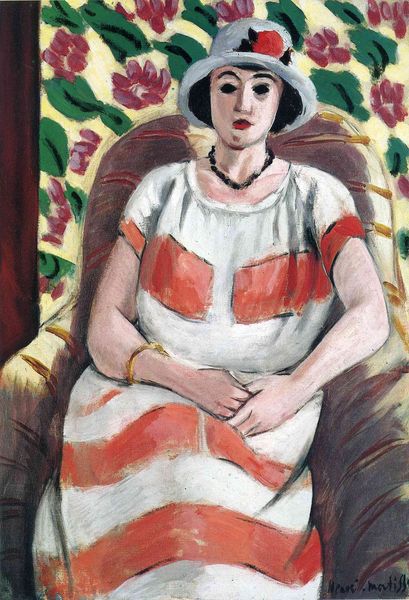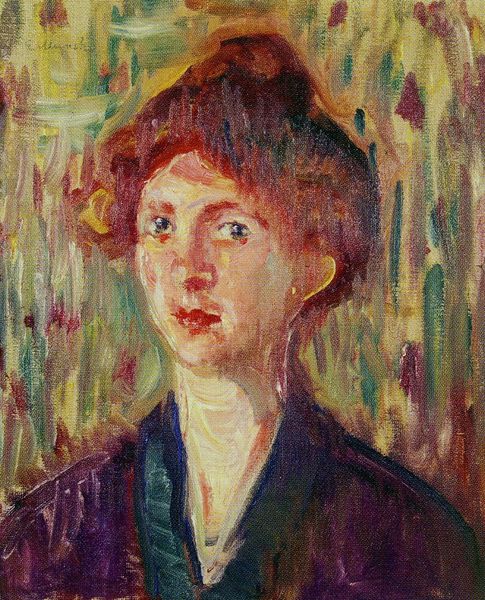
Copyright: Henri Matisse,Fair Use
Editor: This is Henri Matisse's "Woman Portrait" from 1939, painted with oil on canvas. I'm struck by its vibrant colors and how simplified the forms are. What's your perspective on how the materiality informs the image? Curator: Considering Matisse's process, it is essential to ask: where did these vibrant oil paints come from? The intense color depends on industrial innovations of the 19th and early 20th century that made artificial pigments widely accessible, fueling the Fauvist movement. It makes one consider how those processes allowed modern art to exist. Editor: That’s interesting. So the materials themselves, their mass production, influenced the style? I hadn't considered the impact of industrialization so directly on art creation. Curator: Absolutely! The red of the dress, the yellow background—these were no longer colors laboriously derived from natural sources. Their availability changed the way artists like Matisse conceived of and executed their work. We see that translated into modern portraiture, depicting women consuming modern cosmetics such as red lipstick, and decorative hats created from machine-made cloth and materials. Editor: The lipstick is very striking! So you're saying the painting’s bright, simplified aesthetic stems from these industrially-produced materials portraying a consumerist idea of beauty. Curator: Precisely. Furthermore, the seemingly simplistic style often belies the complex layering of paint and the artist's deliberate choices regarding the use of materials to achieve a certain effect. In looking at this, are we considering the artistic talent alone, or are we contemplating the artist in relation to these emerging industrial advances and forms of labor? Editor: I see what you mean. Thinking about art through the lens of production and consumption really changes how I understand it. I'm so used to considering artistic intention, but there's so much more at play here! Curator: Exactly! This approach illuminates art’s entanglement with broader social and economic systems, encouraging a deeper and much more insightful form of appreciation.
Comments
No comments
Be the first to comment and join the conversation on the ultimate creative platform.
